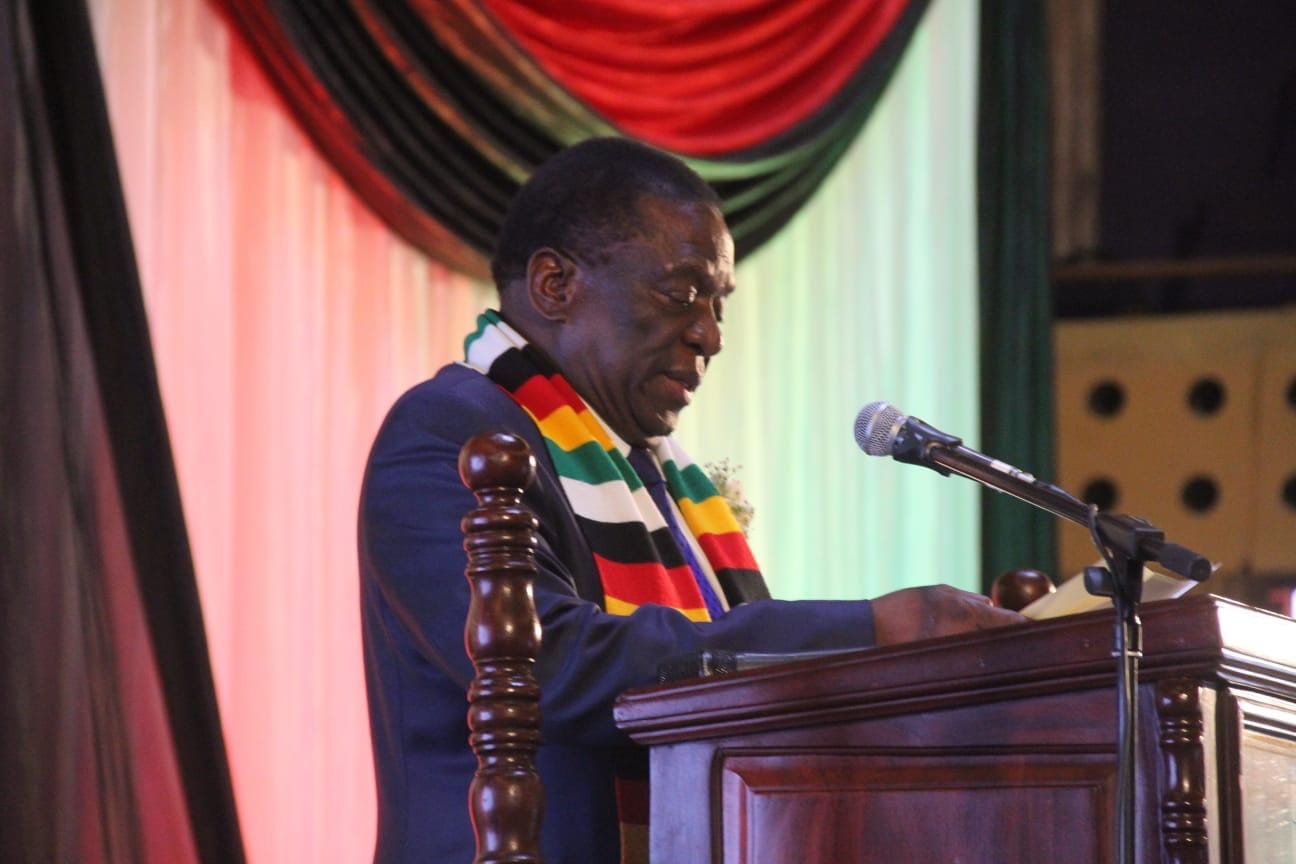By Joyce Mukucha
As Government focuses on mining as one of the vehicles of growth intended at transforming the Zimbabwean economy and attaining an Upper Middle-Income Economy by the year 2030, President Mnangagwa yesterday officially launched the Strategic Roadmap to the Achievement of US$12 billion mining industry by 2023.
This represents a 344 percent increase from the USD2, 7 billion achieved in 2017. Government supposes that by 2030, the mining industry will be spawning upwards of US$20 billion.
To achiveve the US$12 billion mining industry, US$4 billion will be attained from gold, US$3 billion from platinum and US$1 billion will be realised from chrome, iron and steel. Diamonds will contribute US$1 billion whereas coal and hydro carbons will contribute another US$1 billion. Lithium will contribute US$0, 5 billion and others to generate US$1, 5 billion.
Officiating the milestone at a historic event in Harare on the 14th of October 2019, President Emmerson Mnangagwa said the mining sector presents enormous growth prospects towards the speedy attainment of the national vision to become an Upper Middle-Income Economy by 2030. He indicated that the attainment of the Vision 2030 was premised on the mining sector making huge contributions to economic growth. He emphasised that the target set by the industry to generate annual revenue of US$12 billion by 2023 was realistic and will be achieved without flop.
“As Government we are convinced that the mining sector is a forerunner in the provision of backward and forward linkages with other economic sectors, creation of decent jobs, infrastructure development, export earnings and becoming the most preferred investment portfolio. It is envisaged that investments and benefits accruing from this sector will be critical building blocks for a prosperous Zimbabwe.
“Let me highlight that the launch of this Roadmap should not be an end in itself. This must be a stepping stone and building block towards steady socio-economic growth. We may face hurdles along this journey, however, with collaborative effort, greater determination and commitment, we will build the Zimbabwe we all want. I’m delighted that the Roadmap also highlights the contribution of the mining sector towards generation of energy. In the same vein, Government remains seized with the modernisation of our transport systems in particular the National Railways of Zimbabwe for it to offer the requisite logistical support to the mining sector,” he said.
He added that His Government will continue to facilitate local mineral resources beneficiation and value addition, which are vital to the attainment of the $12 billion mining economy by 2023. The milestone, he said, endeavours to create a viable operating environment that attracts both local and foreign investment in the mining industry guided by investor friendly laws and policies in line with international best practices.
For the plan to be effective, President Mnangagwa said that there was need for key enablers and utilities to encapsulate the operationalisation of the Mining Cadastre Information System, reliable supply of power, water and transport systems.
Speaking during the launch, the Minister of Mines and Mining Development Honourable Winston Chitando stressed that the day was historic in the sense that it marked the economic turnaround of the nation and that the mining industry in Zimbabwe will never be the same again. Capital investment, geology and human capital brings mining development, he said were going to drive the mining industry.
“What Zimbabwe lacked is to take advantage of the minerals we have, and when His excellency came with the mantra Zimbabwe is Open for Business, it unlocked inflows of capital. The US$12 billion will be achieved because of investment which was unlocked by the Zimbabwe is open for business mantra.
“If we don’t put our shoulders together, we will not achieve it. This is a serious project and we really need to work hard to demonstrate this change. I urge all stakeholders to assist government in ensuring that the ministry changes direction. It is our hope that investors will come in Zimbabwe and invest particularly in the mining sector but investing not in the traditional extraction mode but a mode that embraces extraction plus beneficiation, value addition of minerals in Zimbabwe so as to deal with triple problems of poverty, unemployment and inequality,” said Minister Chitando.
A Mineral Development Policy set to be unveiled soon, he highlighted, will include; US$12 billion industry by 2023 and over US$20 billion by 2030. Coal is expected to produce electricity sufficient for local use by 2023 and for exports and generation of enough fuel by the year 2030. He further emphasised that there was need to continue developing human skills in as much as the mining industry was concerned.
The Permanent Secretary of Mines and Mining Development Mr. Onesimo Moyo pointed out that the roadmap was not a solo initiative but everyone’s project.
“The ministry would like to create a shared vision of where we would like to take the mining industry. That shared vision cannot be achieved by the ministry alone, and coming up by what is going to be launched today is not a solo effort but a collaborative one from all stakeholders who are here today. We as the ministry have seen it important to ensure that we move with other stakeholder in the same direction guiding each other until we attain the US$12 billion milestone. There is need for skills development, since there is need to change the manner of operation so as to grow, a change that will deliver positive results,” he said.
Government negotiations on a Foreign Direct Investment deal with a key investor in the gold sector are expected to culminate in the establishment of a mine which will produce over 6 tonnes of gold per annum.
